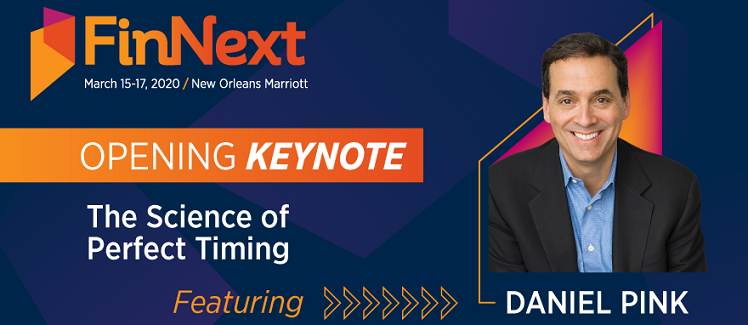Articles
Daniel Pink: Why Good Timing Matters
- By Staff Writers
- Published: 1/21/2020

New York Times Bestselling author and FinNext 2020 opening keynote Daniel Pink recently joined AFP President and CEO Jim Kaitz for an exclusive interview on the AFP Conversations podcast.
Pink, whose books on work, business and behavior have won multiple awards and have sold more than 3 million copies, shared his thoughts on how timing is truly a science that can help us make smarter decisions, enhance productivity, and boost the performance of our organizations.
The following are five key takeaways from the interview.
We tend to move through the day in three stages: a peak, a trough and a recovery. “Our brain power changes over the course of a day. Sometimes it can change in pretty dramatic ways. The way to figure out the right time to do something depends on what it is you're doing. About 80% of us have peak early, a trough in the middle of the day, early to midafternoon, and then recovery later in the day.”
The peak is the time to focus and tackle your toughest challenges. “During our peak, that's when we're most vigilant. We're able to bat away distractions. So during the peak, people perform better on what psychologists call analytic tasks—tasks that require focus and attention. So for, financial professionals, this would be something like going over the numbers, looking at an allocation or going carefully over strategy.”
The trough is when you should do more menial tasks. “There's an array of evidence showing that performance in nearly every realm of life drops sometimes significantly [in the trough]. So during that period don't do stuff that requires a lot of brain power. Do administrative work, answering routine emails, etc.”
Make midpoints visible. “In the NBA, being down by one at halftime is as advantageous as being ahead by two. And so it's a little bit of a paradox. How do midpoints affect us? One of the things that we see is that midpoints have a dual effect. Sometimes they fire is up, sometimes they bring us down. If something has a beginning and an end, it inherently has a midpoint. But we usually don't see it. But in basketball the midpoint has a name; it's half time and a horn goes off. And so one of the things you see in the research on motivation is that being slightly behind at the midpoint of something is extraordinarily motivating.
“There’s sort of like a two-step move in getting midpoints to fire us up. One of them is to identify a midpoint—make it visible. And the second is actually to say, ‘Hey, we're at the midpoint but we're a little bit behind.’”
Most of us take naps the wrong way. “There's a lot of research on napping and what it shows is that naps are actually really good for us—except that most of us are doing it wrong. A good nap is is between 10 and 20 minutes long. Any longer and you start to develop sleep inertia, which is that groggy, boggy feeling you get when you nap too long. So I was a confirmed anti-napper and now that I’ve seen the evidence, I've actually turned around on that. But again, you want to have a nap between 10 and 20 minutes long, because if you nap more than that, there's some downside to it.”
To hear more from Daniel Pink, listen to the full interview. And don’t miss his keynote speech at FinNext 2020. Register here.
Copyright © 2024 Association for Financial Professionals, Inc.
All rights reserved.

